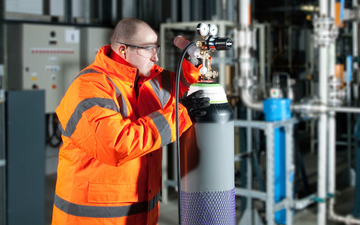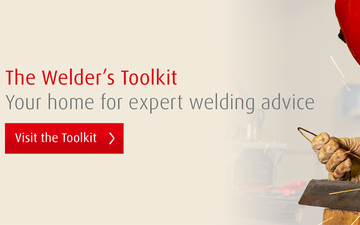- Official BOC UK Online | Industrial Gases | Products & Solutions | BOConline UK
-
Shop
- Industries
- Processes
- Gases & Equipment
-
Solutions
-
Services
-
Health & Safety
-
Contact & Support
- What's Happening
-
Net Zero Strategies
10 Safety Tips to Keep in Mind when Working with Industrial Gas Cylinders
Posted by BOC

Do you work with industrial gas cylinders? We’ve got some great tips to ensure you’re handling, storing and transporting them as safely as possible.
Safety is our number one priority at BOC and we handle 1000s of cylinders every day. Our employees go through rigorous training to ensure they are handling, storing and transporting cylinders safely and we’re passionate about sharing this information with our customers too.
Here are 10 things to be aware of if you’re working with industrial gas cylinders.
1. Make sure you’ve had the proper training
You should always have training before working with gas cylinders and be confident you know what to do in an emergency, as well as how to handle them day-to-day. We suggest speaking to your supervisor if you don’t feel you’ve had full training or you think you need a refresher.
2. Always wear the right safety equipment
This includes a hard hat, safety glasses, high visibility clothing, protective gloves and safety shoes or boots. Take a look at our range of workplace safety and protective equipment. Remember to also check if the site you are working on has any specific safety requirements and ensure you follow the advice.
3. Always use a cylinder trolley or fork lift truck to move cylinders.
When moving individual cylinders always use a cylinder trolley and for MCPs (Manifold Cylinder Pallets) ensure they are transported by a fork lift truck driven by a qualified operative. Don’t forget to make sure all cylinders are secured and the valves are closed before moving them.
4. You should always know what you are handling
Always use the cylinder label to identify the contents of the cylinder, rather than relying on the colour of the cylinder. If a label is missing or unreadable, don’t use the cylinder.
5. Check your cylinders are in a safe condition
Treat any cylinders which show signs of impact, heat damage or discolouration with extreme caution and contact the supplier immediately.
6. Make sure cylinders are always stored correctly
They should be kept vertical, in a well-ventilated, well-drained area, away from sources of heat or ignition and segregated by the properties of their gas. It’s important not to keep any other products in a cylinder store, particularly any flammable materials. You should store full and empty cylinders separately and rotate your stock so that the oldest cylinders get used up first.
All cylinder storage facilities should have appropriate signage warning people on the dos and don’ts and what to do in an emergency.
For more information read the BCGA’s ‘Code of Practice 44 The storage of gas cylinders. Revision 1: 2022’ which defines the principles of safe practice for the storage of gas cylinders and gas cylinder bundles and outlines the relevant legal requirements in the UK.
7. Remember all gases are different
All gases have their own properties and hazards, so if you’re handling or transporting cylinders you need to read the safety data sheets and make sure you understand that particular product’s key properties and risks. Find all BOC’s safety data sheets on our website.
8. Use a safe lifting and manual handing technique
Don’t ever try and catch a falling cylinder – let them fall and move away from the direction of the impact. Take a firm hold around the neck or collar of a cylinder with both hands. Keep your back straight and move into the cylinder as it rises. Never lift a cylinder by the cylinder valve or valve handwheel.
9. Secure cylinders properly to prevent them moving or getting knocked over
All cylinders should be secured with straps and chocks to prevent them from rolling around. In particular, make sure the valves can’t get knocked open while you’re on the move.
Always transport LPG (propane) and liquefied gas cylinders upright. If you are moving acetylene cylinders and can’t avoid having them lying down, it’s important to make sure they are stood upright for at least 30 minutes before they are used.
10. Always use a well-ventilated vehicle and unload cylinders immediately on arrival
Never move or store gas cylinders in an unventilated vehicle and unload when you arrive at your destination. Remember to carry a dry power fire extinguisher and don’t forget to test it regularly to make sure it’s in good working order.
Want to know more about working with industrial gas cylinders safely? Take a look at our Safe Under Pressure video series; Handling cylinders and cylinder care and Transporting Gas Cylinders videos.

